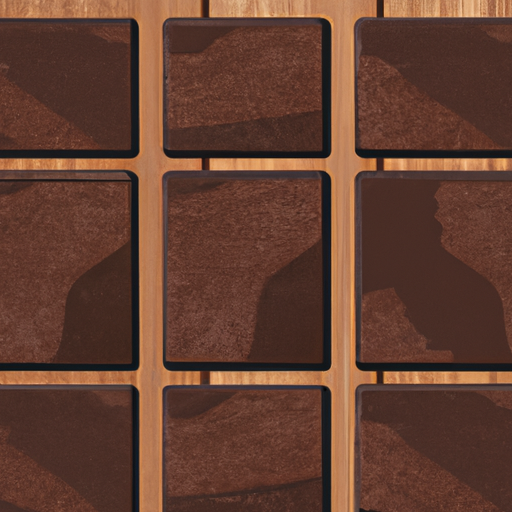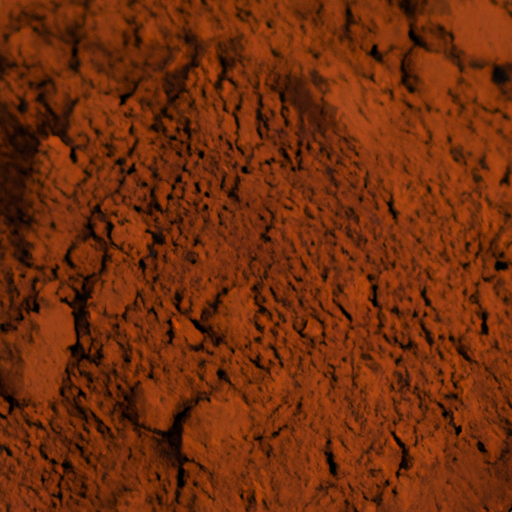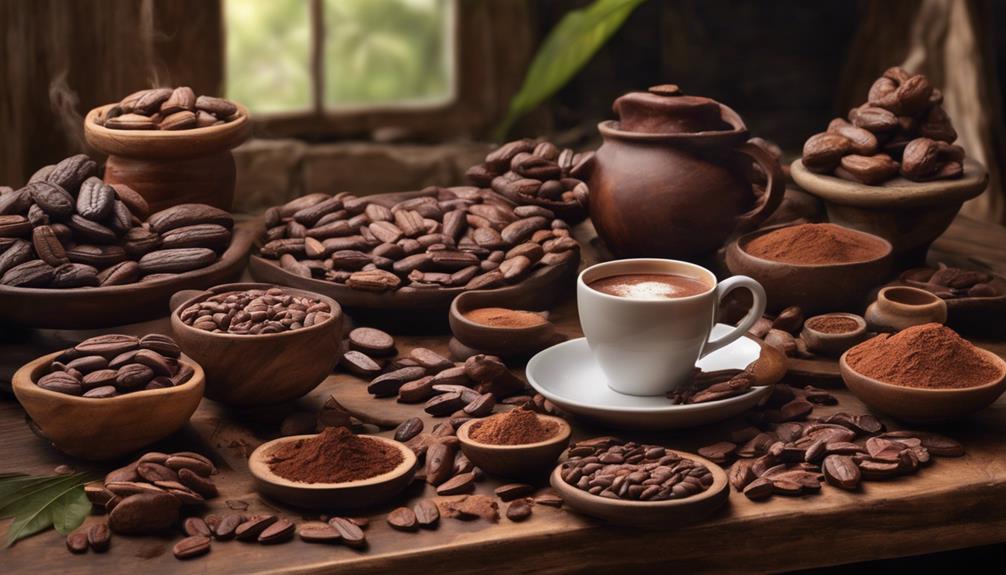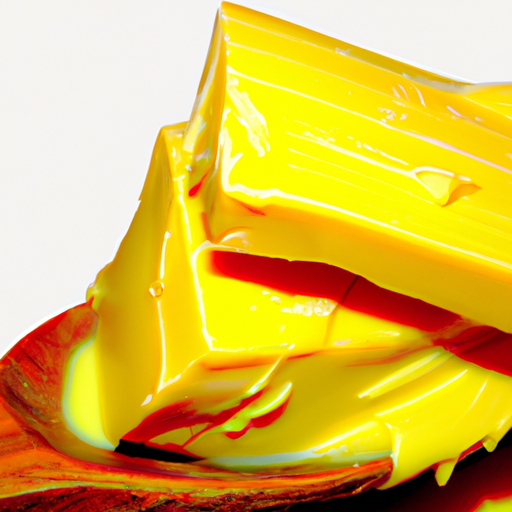As I hold the raw cacao paste block in my hands, I can’t help but feel excited and eager. This simple block contains the secrets to a world of delicious flavors and amazing health advantages.
Raw cacao paste, derived from the cacao bean, is a true treasure for both bakers and health enthusiasts alike. Its origins can be traced back to ancient civilizations, where it was revered for its medicinal properties. Today, we have the privilege of harnessing its power in our own kitchens.
In this article, we will delve into the fascinating origins of raw cacao paste, explore its numerous health benefits, and discover how to incorporate it into our baking endeavors. Join me on this journey as we unravel the secrets of raw cacao paste and unlock its full potential.
Key Takeaways
- Raw cacao paste is sold in blocks and adds a rich, chocolatey flavor to recipes.
- It is high in antioxidants, magnesium, and iron, providing health benefits.
- Proper storage is required to maintain its freshness and flavor.
- Raw cacao paste can be melted and incorporated into various recipes, making it a versatile ingredient for both sweet treats and savory dishes.
The Origins of Raw Cacao Paste
Discover the rich history and origins of raw cacao paste as you delve into the luscious blocks that hold the secrets of its tantalizing taste.
The history of cacao production can be traced back to ancient Mesoamerica. The Mayans and Aztecs revered cacao as a sacred ingredient and believed that consuming it gave them strength and vitality.
Today, cacao paste is made by grinding cacao beans into a smooth, thick liquid that solidifies into blocks. This traditional process preserves the nutritional profile of raw cacao paste, which is rich in antioxidants, minerals like magnesium and iron, and vitamins such as B vitamins and vitamin E.
These nutrients contribute to its health benefits, which we will explore in the next section. So, let’s delve deeper into the health benefits of raw cacao paste.
The Health Benefits of Raw Cacao Paste
Explore the incredible health benefits of indulging in this rich and decadent treat, and let yourself experience the undeniable joy it brings. Raw cacao paste, derived from the cacao bean, is a powerhouse of nutrients that can positively impact both our skin health and energy levels. High in antioxidants, raw cacao paste helps protect our skin from free radicals, promoting a youthful and radiant complexion. Additionally, it contains flavonoids that improve blood flow, providing a natural glow. Not only that, raw cacao paste is rich in magnesium and iron, which play a crucial role in boosting energy levels and reducing fatigue. Incorporating this superfood into our daily routine can provide a natural energy boost and support overall vitality. As we delve into the next section on how to use raw cacao paste in baking, prepare to elevate your culinary creations to new heights.
How to Use Raw Cacao Paste in Baking
When it comes to using raw cacao paste in baking, there are plenty of delicious options to explore.
One of my favorite ways to incorporate it is by making homemade chocolate bars and truffles. The deep, rich flavor of the cacao paste adds a decadent touch to these treats.
Additionally, raw cacao paste can be used to create a luxurious and indulgent hot chocolate that is sure to satisfy any chocolate lover.
Lastly, adding raw cacao paste to smoothies and desserts can elevate their taste and provide a boost of antioxidants and other beneficial compounds.
So go ahead and get creative in the kitchen with this versatile and nutritious ingredient!
Homemade Chocolate Bars and Truffles
Indulge in the rich, velvety goodness of homemade chocolate bars and truffles made with raw cacao paste. Raw cacao paste is the key ingredient in making delectable chocolate treats that will satisfy your sweet tooth. Here are three ways to use raw cacao paste in creating homemade chocolate bark and truffles:
-
Chocolate Bark: Melt raw cacao paste and spread it on a baking sheet. Add your favorite toppings like nuts, dried fruits, or sea salt. Let it cool and harden before breaking it into deliciously crunchy pieces.
-
Truffles: Mix melted raw cacao paste with coconut oil, sweetener, and flavorings like vanilla or peppermint extract. Roll the mixture into bite-sized balls and coat them in cocoa powder, shredded coconut, or chopped nuts.
-
Filled Truffles: Create a creamy filling by blending soaked cashews, coconut cream, and sweetener with melted raw cacao paste. Shape the mixture into small balls and coat them with melted chocolate.
Now that you have mastered making homemade chocolate bars and truffles, let’s move on to the next indulgence: decadent hot chocolate.
Decadent Hot Chocolate
Immerse yourself in the indulgent richness of a velvety cup of homemade hot chocolate. It’s made with the finest quality chocolate and topped with a dollop of whipped cream.
Decadent hot chocolate not only satisfies your sweet tooth but also provides several health benefits. The key ingredient, raw cacao paste, contains high levels of antioxidants. These antioxidants protect against cell damage and reduce the risk of chronic diseases.
Raw cacao paste is also rich in flavonoids, which have been linked to improved heart health and reduced inflammation. Additionally, hot chocolate made with raw cacao paste is a good source of minerals such as magnesium, iron, and zinc. These minerals support various bodily functions, including energy production and immune system health.
So, go ahead and indulge in a cup of decadent hot chocolate to enjoy its delightful taste and numerous health benefits.
In the next section, we will explore how you can add raw cacao paste to smoothies and desserts to enhance their flavor and nutritional value.
Add it to Smoothies and Desserts
Boost your smoothies and desserts to a whole new level of deliciousness by adding this heavenly ingredient. Raw cacao paste, sold in blocks, is a powerhouse of nutrients that can transform ordinary recipes into extraordinary treats.
When added to smoothie recipes, raw cacao paste provides a rich and velvety texture, while enhancing the flavor with its intense chocolaty notes. It truly takes your smoothies from average to amazing.
In desserts, raw cacao paste adds depth and complexity, taking them from ordinary to extraordinary. Imagine biting into a chocolate truffle or fudgy brownie made with raw cacao paste. The flavor explosion will make your taste buds dance with joy.
Try adding raw cacao paste to your favorite smoothie recipe or use it to create decadent dessert ideas. From chocolate truffles to fudgy brownies, the possibilities are endless. Get creative and let your imagination run wild.
Now, let’s explore the difference between raw cacao paste and cocoa powder.
The Difference Between Raw Cacao Paste and Cocoa Powder
Raw cacao paste, unlike cocoa powder, is a smooth and velvety substance that retains the pure essence of the cacao bean. It is made by grinding cacao beans into a paste, which is then molded into blocks. The process of making raw cacao paste involves fermenting and drying the cacao beans, followed by grinding them into a fine powder. This powder is then melted and cooled to create the paste.
Raw cacao paste is rich in nutrients and antioxidants, making it a healthier option compared to cocoa powder. It contains high levels of magnesium, iron, and flavonoids, which have been linked to various health benefits such as improved heart health and mood enhancement.
To further understand the nutritional benefits of raw cacao paste, let’s take a look at the following table:
| Nutrient | Amount per 100g |
|---|---|
| Magnesium | 272mg |
| Iron | 9mg |
| Flavonoids | 750mg |
These values highlight the abundance of essential minerals and beneficial compounds found in raw cacao paste.
Now that we have explored the nutritional benefits and process of making raw cacao paste, let’s move on to where you can buy this delicious and nutritious ingredient.
Where to Buy Raw Cacao Paste
Now that we understand the difference between raw cacao paste and cocoa powder, let’s explore where we can buy this delectable ingredient. There are several buying options available for those interested in incorporating raw cacao paste into their culinary creations. Here are four popular choices:
-
Specialty stores: Many health food stores and specialty grocery stores carry raw cacao paste in their baking or health food sections.
-
Online retailers: Numerous online retailers offer raw cacao paste, providing convenient access and a wide selection of brands and varieties.
-
Farmer’s markets: Local farmer’s markets often have vendors who sell artisanal, organic raw cacao paste directly from the source.
-
Direct from manufacturers: Some cacao producers sell their raw cacao paste directly to consumers, ensuring high quality and freshness.
Using raw cacao paste in your recipes not only adds a rich, chocolatey flavor, but it also provides numerous health benefits. Its high antioxidant content, along with minerals like magnesium and iron, make it a valuable addition to a balanced diet.
Now that we know where to buy raw cacao paste and its benefits, let’s explore some tips for storing this delightful ingredient.
Tips for Storing Raw Cacao Paste
For optimal freshness and flavor, it’s essential to properly store your precious supply of raw cacao paste. Here are some tips to help you store it properly:
-
Storing cacao nibs in an airtight container in a cool, dark place will help preserve their quality and prevent them from absorbing any unwanted odors.
-
Keep the cacao paste away from direct sunlight, heat, and moisture, as these factors can cause the paste to melt or develop a gritty texture.
Incorporating cacao paste into your skincare routine can provide numerous benefits for your skin. The antioxidants present in cacao paste help protect the skin against free radicals, while the natural oils provide hydration and nourishment.
With its versatile uses, exploring different varieties and flavors of raw cacao paste can add an exciting twist to your culinary creations.
Exploring Different Varieties and Flavors
Indulge yourself in the delightful world of cacao paste by exploring its different varieties and flavors, because who doesn’t enjoy a little decadence in their culinary creations? Raw cacao paste, sold in blocks, comes in a wide range of options that can be distinguished by their different processing methods. Whether you prefer a smooth and creamy texture or a slightly gritty one, there is a cacao paste variety to suit your taste. Additionally, the flavors can vary depending on the origin of the cacao beans and the fermentation process they undergo. Pairing raw cacao paste with other ingredients can create endless possibilities for culinary experimentation. From sweet treats like chocolate bars and truffles to savory dishes like mole sauce, the versatility of raw cacao paste is truly remarkable. Transitioning into the next section about raw cacao paste in traditional and modern cuisine, we will explore its historical significance and contemporary uses.
Raw Cacao Paste in Traditional and Modern Cuisine
Immerse yourself in the rich and vibrant world of cacao paste as it weaves its way through both traditional and modern cuisine, tantalizing your taste buds with its diverse and distinctive flavors.
Traditional cacao recipes have been passed down through generations, showcasing the versatility of raw cacao paste in creating delectable treats. From Mexican hot chocolate to Mole sauce, cacao paste adds depth and complexity to these time-honored dishes.
In addition to its use in traditional recipes, raw cacao paste has also found a place in modern beverages. Its velvety texture and intense chocolate flavor make it a popular choice for creating decadent hot chocolate drinks and smoothies. Whether enjoyed hot or cold, these beverages provide a rich and indulgent experience, highlighting the natural goodness of cacao.
As we delve into the frequently asked questions about raw cacao paste, let’s explore its origins and processing methods.
Frequently Asked Questions about Raw Cacao Paste
Attention, chocolate lovers! Curious about the ins and outs of raw cacao paste? Let’s dive into some frequently asked questions about this delicious ingredient.
| Question | Answer |
|---|---|
| Can raw cacao paste be used in cooking? | Absolutely! Raw cacao paste is versatile and can be melted down and incorporated into various recipes. |
| What are some cooking techniques for using raw cacao paste? | You can melt it and use it as a base for homemade chocolates, blend it into smoothies, or even use it as a decadent drizzle over desserts. |
| Is raw cacao paste nutritious? | Yes! Raw cacao paste is rich in antioxidants, minerals like magnesium and iron, and can provide a natural energy boost. |
| How does raw cacao paste compare to processed chocolate? | Raw cacao paste retains more of its nutrients and is minimally processed, making it a healthier alternative to processed chocolate. |
| Can raw cacao paste be a part of a balanced diet? | Absolutely! When consumed in moderation, raw cacao paste can be a delicious and nutritious addition to a balanced diet. |
Raw cacao paste is a versatile ingredient that can be used in various cooking techniques. Its nutritional value, including antioxidants and minerals, makes it a healthy choice for chocolate lovers. Incorporating raw cacao paste into a balanced diet can be a tasty way to enjoy the benefits of this delicious ingredient.
Frequently Asked Questions
How long does raw cacao paste last once opened?
The shelf life of opened raw cacao paste depends on proper storage. To maximize freshness, store it in an airtight container in a cool, dry place. It is recommended to use it within a few months for optimal flavor and quality.
Can raw cacao paste be used as a substitute for chocolate in recipes?
Yes, raw cacao paste can be used as a substitute for chocolate in recipes. It provides similar taste and texture, and offers nutritional benefits such as antioxidants, minerals, and fiber.
Is raw cacao paste suitable for people with dietary restrictions or allergies?
As someone with dietary restrictions, I’ve found that raw cacao paste has been a game-changer. Its nutritional benefits, like being high in antioxidants and iron, make it a great alternative for individuals with allergies or intolerances.
Can raw cacao paste be consumed directly without any processing or cooking?
Raw cacao paste can be consumed directly without processing or cooking. It offers benefits for mental health and can also be used in skincare routines. Incorporating raw cacao paste into your diet is a scientifically supported way to boost mood and promote overall well-being.
Are there any specific temperature requirements for storing raw cacao paste?
There are specific temperature storage requirements for raw cacao paste. It should be stored in a cool, dry place at temperatures below 75°F to maintain its quality. Proper storage preserves the beneficial compounds present in raw cacao paste.
Can I Use Ready-Made Raw Cacao Paste in Recipes That Call for Homemade Cacao Paste?
Yes, you can definitely use ready-made raw cacao paste in recipes that call for homemade cacao paste. It provides the same rich, chocolatey flavor and smooth texture without the hassle of making it from scratch. Try it in your next raw cacao paste recipe for a convenient and delicious option.
Conclusion
In conclusion, raw cacao paste is a versatile and nutritious ingredient that can enhance both traditional and modern cuisine. Its origins can be traced back to ancient civilizations, where it was highly regarded for its health benefits.
With its rich flavor and numerous antioxidants, raw cacao paste can be used in various baking recipes. But how can we resist the temptation of indulging in a delectable treat that is also good for us?
So, why not give raw cacao paste a try and experience the wonders it can do for your taste buds and well-being?










